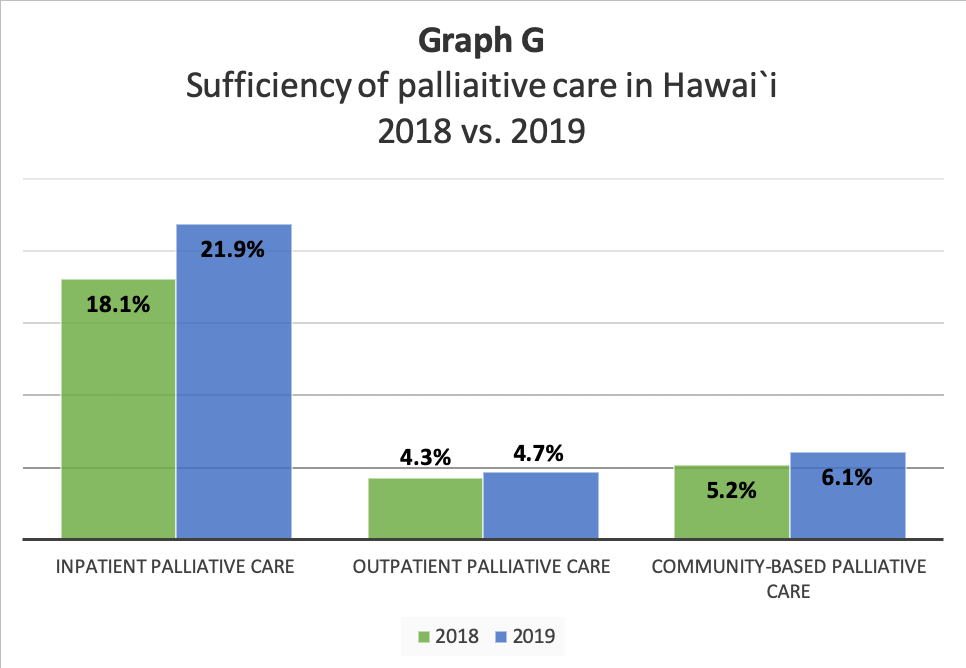In order to map palliative care across Hawaii, a survey was conducted from January to July 2020 to determine the availability of
• in-patient,
• out-patient and
• community based options.
Through surveys and focus groups, data was collected and compiled in a report. This research, the first of its kinds in Hawai‘i, was conducted by Chelsea Hirano, a masters of nursing student at the University of Hawai‘i in collaboration with Jeannette Koijane, Executive Director of Kōkua Mau.
In-patient take away points (pg 13)
- 5 out of 7 participating inpatient organizations reported they have a palliative care program that corresponds with the definition of inpatient palliative care as outlined by the California Health Care Foundation.
- All respondents reported an increase in the number of palliative care consults from 2018 to 2019.
- Most programs were equipped with some kind of nurse, either APRN or RN, and a social worker, with the Queen’s Medical Center holding the largest palliative care team comprised of 3 physicians, 4 APRN’s, 2 social workers, and 1 chaplain.
- The top three locations where referrals are initiated in the adult inpatient setting are the ICU, cardiac telemetry unit, and medical-surgical unit, in that order.
- There are a variety of referral mechanisms or triggers for inpatient palliative care depending on the facility: an order from the patient’s attending physician, multiple hospital admissions, the need for pain management, metastatic cancer diagnosis, patient and/or family request, or a life-limiting or life-changing diagnosis where the patient and family needs support for medical decision-making.
Out-patient take away points (pg 15)
- While it is positive that these outpatient palliative care clinics exist, there are various differences between the programs and the way they operate.
- Queen’s reported their referral sources rarely come from primary care providers, but instead come from medical oncologists, radiation oncologists, and surgeons. This may be an indication that there is an opportunity to increase palliative care awareness for primary care providers.
Currently, palliative care programs do not have standardized measures to gauge outcomes. Moving forward, we should aim to implement standard measures and metrics across all facilities.
Community based take away points (pg 17)
- All of the nine programs reported that they participate in at least one or a combination of Supportive Care from HMSA, Concurrent Care from UHA, or the VA in-home palliative care program.
- The number of community-based palliative care consults generally increased from 2018 to 2019.
- All participants would like other health plans to offer palliative care coverage.
In order to determine actual numbers of patients served, we compared our results to a study conducted by the California Health Care Foundation. A high and low estimate of need was calculated.

Report: Mapping Palliative Care in Hawaii (as PDF file)
Chelsea Hirano presented on her research in July 2020. Watch the presentation
